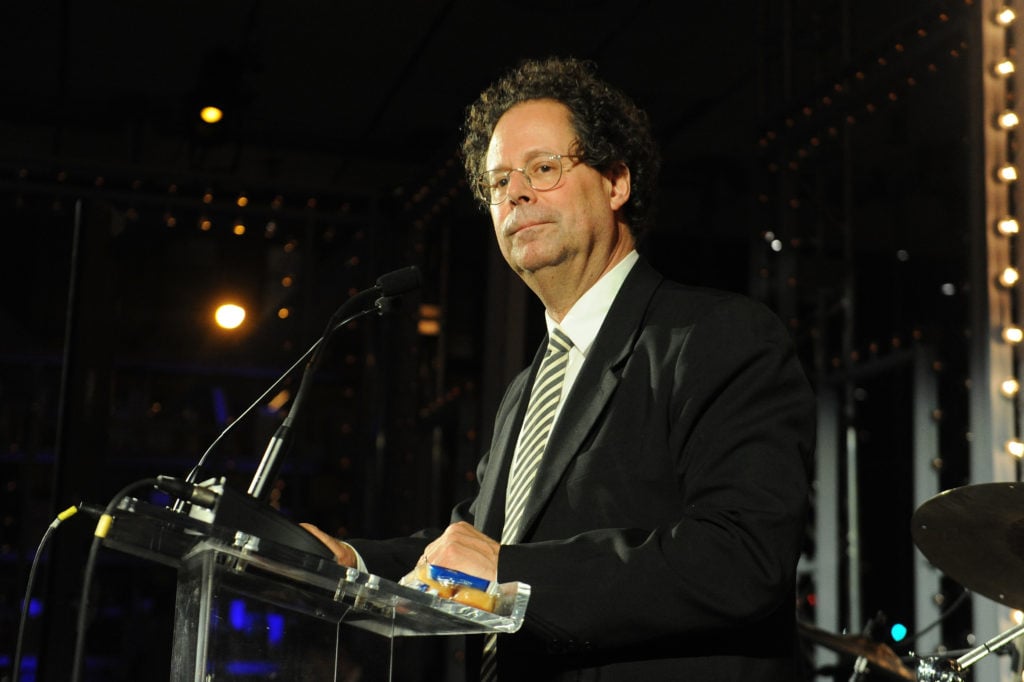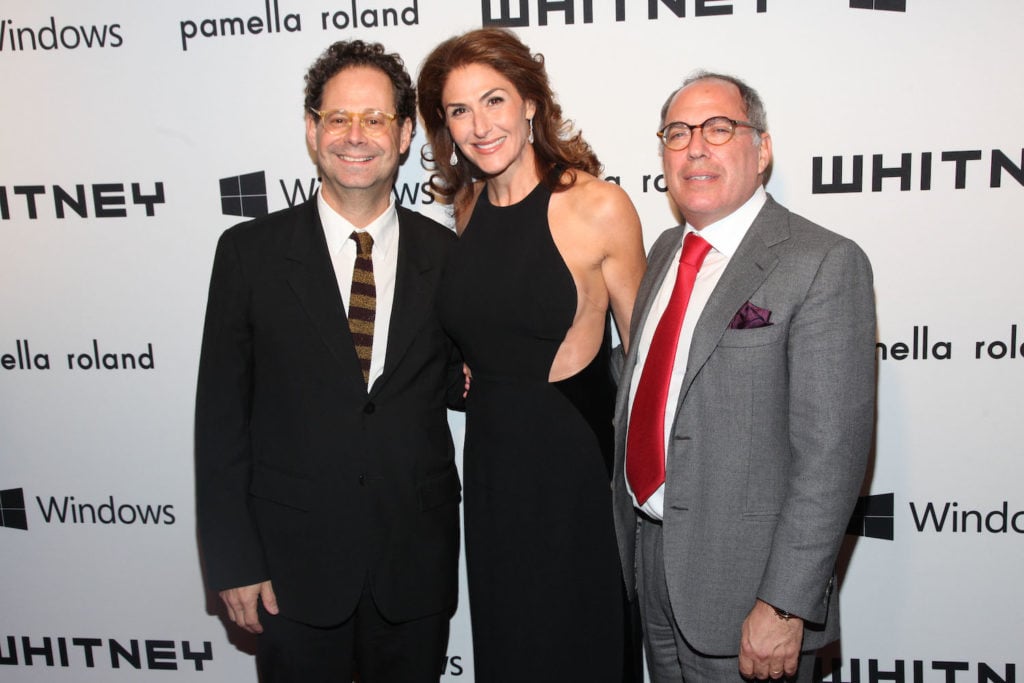Politics
The Whitney ‘Cannot Right All the Ills of an Unjust World’: Adam Weinberg Responds to Staff Protests Over a Board Member
More than 100 staff members have signed a letter protesting Whitney vice-chairman Warren Kanders.

More than 100 staff members have signed a letter protesting Whitney vice-chairman Warren Kanders.

Caroline Goldstein

Whitney Museum of American Art director Adam Weinberg has issued a statement in response to a letter signed by more than 100 staffers calling on the museum to reconsider its ties to one of its board’s vice chairs. Warren B. Kanders, the individual targeted in the protest letter, is the owner of Safariland, a manufacturer of tear gas used by US Customs and Border Protection officers.
The letter of protest, published last week by Hyperallergic, had called on the Whitney to set clearer guidelines about the moral conduct of board members, especially, it stated, when concerning “transformative funding—from individuals who are knowingly complicit in the injustices committed on our own land and across our borders.”
It had also called on the museum to “consider asking for Warren Kanders’ resignation” and had asked that museum leadership “prioritize an internal statement to staff by Monday, December 3rd, followed by a public statement.” The current statement appears to be a response to that demand.

Whitney Museum director Adam Weinberg, with Allison Kanders and Warren Kanders at the 2012 Whitney Gala. ©Patrick McMullan. Photo by A. De Vos/PatrickMcMullan.com.
“We respect the right to dissent as long as we can safeguard the art in our care and the people in our midst,” the letter from Adam Weinberg, shared by the Whitney’s press department, states. “As one director colleague describes the contemporary museum, it is ‘a safe space for unsafe ideas.’ This is the democracy of art.”
The letter goes on to mention some of the museum’s recent shows that “present progressive and challenging artists… for vast audiences,” citing exhibitions of David Wojnarowicz, Zoe Leonard, Grant Wood, Mary Corse, and Andy Warhol as examples of art reflecting on fraught social and political issues—shows implicitly made possible by the support of donors like Kanders (as well as other board members with controversial ties).
The letter does not make any mention of Kanders by name. It also does not address any of the specific issues raised in the original letter regarding guidelines for the conduct of board members.
It does, however, state firmly that “trustees do not hire staff, select exhibitions, organize programs or make acquisitions, and staff does not appoint or remove board members.”
Kanders, for his part, has responded by defending the products that Safariland manufactures. In a letter shared by ARTnews, Kanders noted that the company only sells to domestic law enforcement, or international clients vetted by the State Department. He cited the company’s other products such as safety holsters that keep cops’ weapons from being stolen and protective bomb suits, saying “my hope is that providing facts about Safariland, and the vital products it produces for public safety professionals worldwide, can lead to a more informed and constructive dialogue as we move forward together.”

An example of Safariland’s 7TS™ series holsters, as advertised on the Safariland Group website.
“The staff letter implies that I am responsible for the decision to use these products. I am not. That is not an abdication of responsibility, it is an acknowledgement of reality,” Kanders added. “I think it is clear that I am not the problem the authors of the letter seek to solve.”
Weinberg’s letter also seems to concede that the communique will not please all of its internal critics. “To those of you, and I trust it is nearly all, who want to move forward despite some significant differences of opinion, I am here as your partner, to lead and to work hard every day to make the Whitney, and possibly the world, a better place,” Weinberg writes. “I accept that there may be a few of you who are not inclined to do so, but I would like nothing more than to continue this journey together.”
Read the full letter from Weinberg below:
Dear Staff and Trustees,
I write to you now as one community, one family—the Whitney. Together, for the last fifteen years, we have created a place of great promise, hopes and dreams, often against great odds. Our community united in common purpose to reimagine a home for artists in the 21st century where they can envision, experiment, struggle, risk and even protest openly, unencumbered and uncensored. We have fashioned this protected space together through mutual trust, respect, openness and discussion even when opinions differ. We respect the right to dissent as long as we can safeguard the art in our care and the people in our midst. As one director colleague describes the contemporary museum, it is “a safe space for unsafe ideas.” This is the democracy of art.
We truly live in difficult times. People are suffering in our city, the US and around the world: nationalism has risen to unimaginable heights; homelessness is rampant; refugee crises abound; people of color, women and LGBTQ communities feel under attack; and the environment grows more precarious. All these tragedies have understandably led to tremendous sadness and frustration, quick tempers, magnified rhetoric and generational conflict.
Like many contemporary cultural institutions, the Whitney Museum has always been a space for the playing out of disparate and conflicting ideas. Even as we are idealistic and missionary in our belief in artists—as established by our founder Gertrude Vanderbilt Whitney—the Whitney is first and foremost a museum. It cannot right all the ills of an unjust world, nor is that its role. Yet, I contend that the Whitney has a critical and urgent part to play in making sure that unheard and unwanted voices are recognized. Through our openness and independence we can foreground often marginalized, unconventional and seemingly unacceptable ideas not presented in other sites in our culture.
I am proud of the work we are doing to present progressive and challenging artists and exhibitions for vast audiences, including this year alone: David Wojnarowicz, an outcast voice silenced much too early; Zoe Leonard, a poet of the unseen and unsung; Pacha, Llaqta, Wasichay, a chance to experience powerful new Latinx voices; Programmed, a radical rethinking of art and technology; Mary Corse, a giant of her generation often overlooked because of her gender; Grant Wood, who worked in other challenging times; Between the Waters, a view of young artists grappling with environmental precariousness; Nick Mauss’s meditation on dance, fashion, design and untold queer histories; and now, Andy Warhol, whose work continues to interrogate and upend how we think of the world today. Beyond that we have presented a compelling array of artist-centric educational and community programs that reach increasingly diverse publics from our neighborhood and afar.
We at the Whitney have created a culture that is unique and vibrant—but also precious and fragile. This “space” is not one I determine as director but something that we fashion by mutual consent and shared commitment on all levels and in many ways. As members of the Whitney community, we each have our critical and complementary roles: trustees do not hire staff, select exhibitions, organize programs or make acquisitions, and staff does not appoint or remove board members. Our truly extraordinary environment, which lends such high expectations, is something we must preserve collectively. Even as we contend with often profound contradictions within our culture, we must live within the laws of society and observe the “rules” of our Museum—mutual respect, fairness, tolerance and freedom of expression and, speaking personally, a commitment to kindness. It is so easy to tear down but so much more difficult to build and sustain.
To those of you, and I trust it is nearly all, who want to move forward despite some significant differences of opinion, I am here as your partner, to lead and to work hard every day to make the Whitney, and possibly the world, a better place. I accept that there may be a few of you who are not inclined to do so, but I would like nothing more than to continue this journey together. We have important work to do. As Flora Miller Biddle, the granddaughter of our founder, said several years ago, “The Whitney Museum is an idea…” This idea, painstakingly built for close to ninety years, has been bequeathed to us. It is a vulnerable idea, now ours to nurture.
I am deeply grateful to our extremely committed, thoughtful and generous board, as well as to our talented and dedicated staff.
I look forward to working and meeting with you in the days ahead.
With respect,
Adam
This article has been updated with additional reporting by Sarah Cascone to include a response from Kanders.